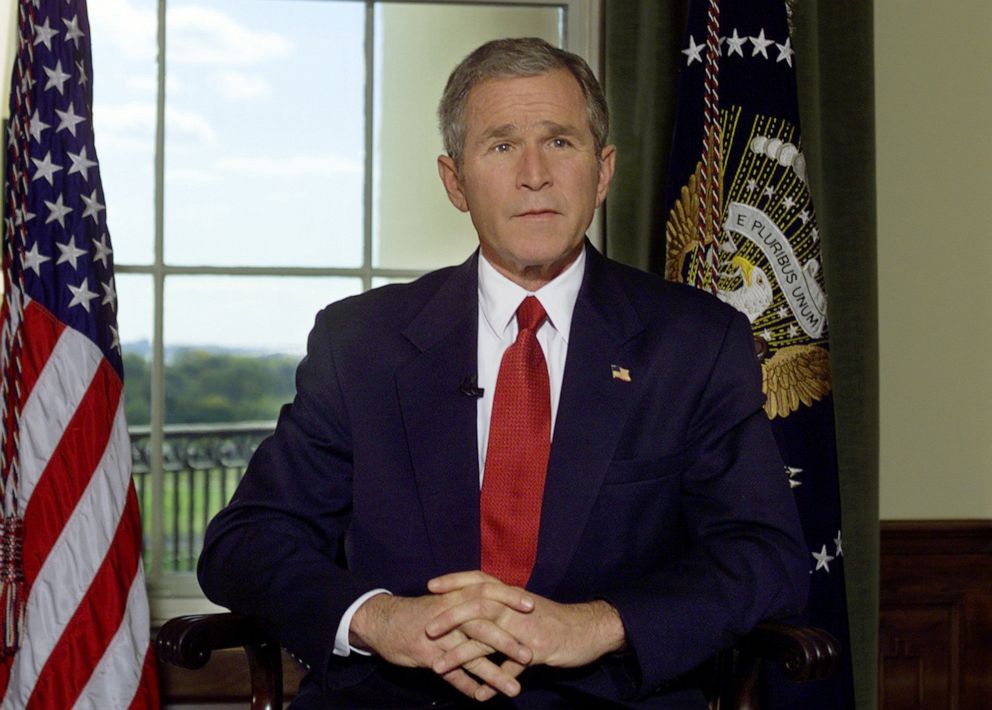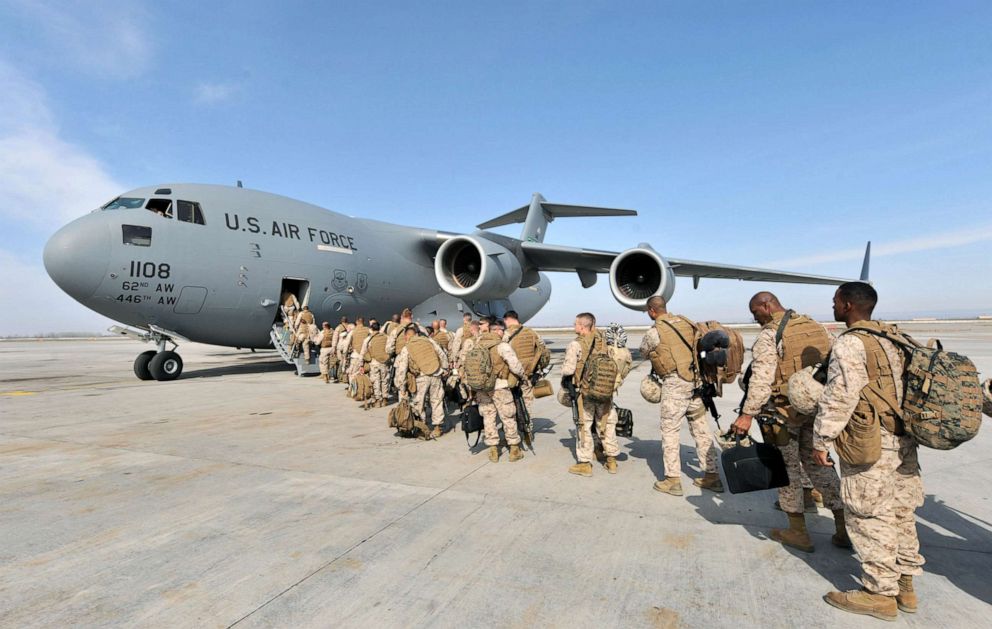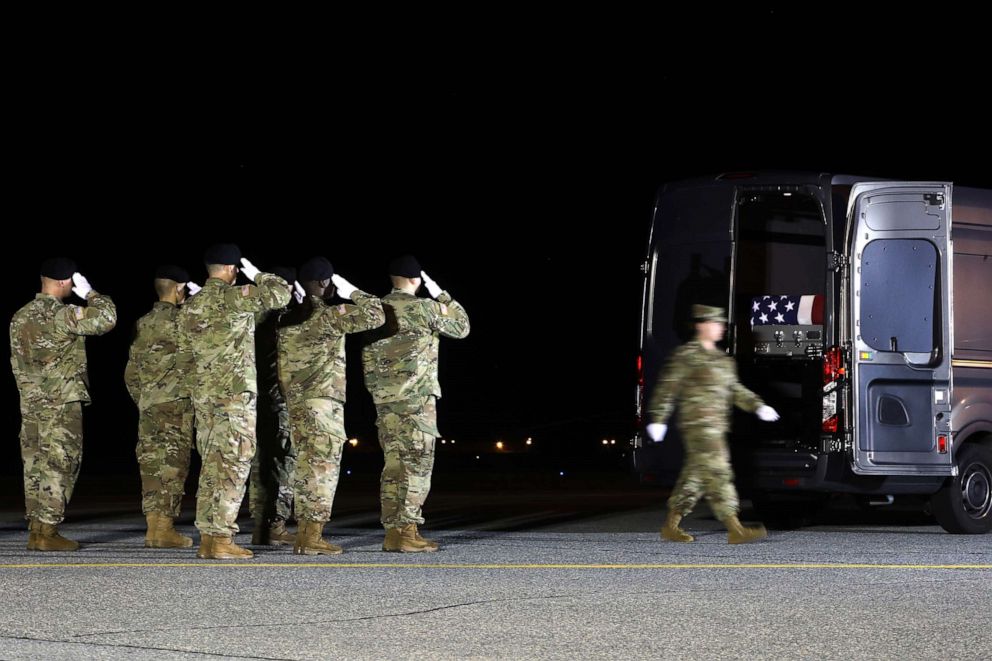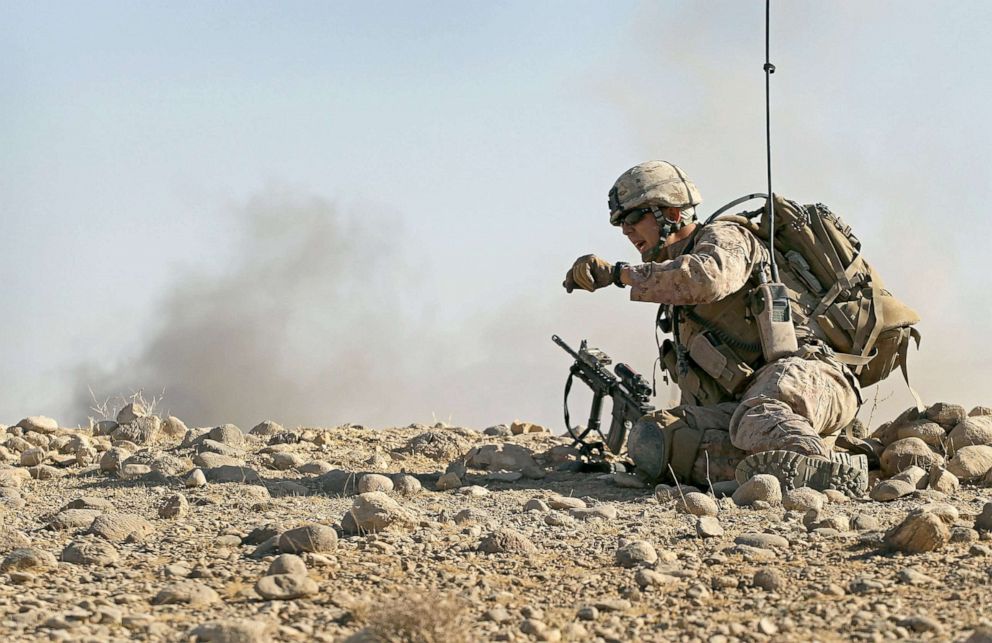The war in Afghanistan started 18 years ago to fight terrorism after 9/11. Is the US safer?
America's longest war is reaching a new milestone.
The world was dramatically different 18 years ago when the war in Afghanistan started.
Thousands of families were grappling with the deaths of their loved ones in the World Trade Center, the Pentagon and Shanksville, Pennsylvania on Sept. 11 and the American public was coming to terms with the reality of an enemy unlike any the nation had faced before -- a shadowy network of terrorists that orchestrated the worst attack on American soil since Pearl Harbor.
Less than a month after the attacks, on Oct. 7, 2001, the course of U.S. military operations changed for years to come when Operation Enduring Freedom officially launched, with then-President George W. Bush announcing the action during an address from the White House Treaty Room.
Bush said that the operation involved "strikes against al Qaeda terrorist training camps and military installations of the Taliban regime in Afghanistan," and the "carefully targeted actions are designed to disrupt the use of Afghanistan as a terrorist base of operations, and to attack the military capability of the Taliban regime."

That operation ballooned into a multi-front war on terror that has lasted nearly two decades and sparked criticism for its duration and questions about its mission. Since then, the terrorism threat landscape has evolved, with ISIS and homegrown extremists emerging as dangers.
Security experts appear to agree that original goal of Operation Enduring Freedom seems to have been accomplished, but the question of whether or not America is safer today remains up for debate.
"We’re safer from an al Qaeda attack, a 9/11-style attack absolutely," said retired Col. Christopher Kolenda, who commanded troops in Afghanistan in 2007 and 2008 and also engaged the Taliban in high-level diplomacy on behalf of the secretary of defense.
"There’s no longer a safe haven in Afghanistan," Kolenda said, noting that al Qaeda "has been decimated and is on the run and is no longer capable of a 9/11-style attack."
Vanda Felbab-Brown, a senior fellow at the Brookings Institution, who studies Afghanistan and terrorism, echoed that sentiment, saying "the fact that the Taliban provided safe haven to al Qaeda in which al Qaeda could recruit, organize, plan, train, made al Qaeda very potent, and that is gone now."
"In Afghanistan, the Taliban is currently not a threat to the United States, to the U.S. homeland. It clearly battles [the] U.S. military in Afghanistan but is not motivated to conduct attacks against the U.S. homeland and does not attempt to do so," Felbab-Brown said of the current state of the threat from Afghanistan.

Just last month, the Taliban killed an American, one of among 12 people killed in a bomb blast in Kabul. More than a dozen U.S. servicemembers have been killed in the country so far this year -- the highest number since 2014.
Al Qaeda appears to be trying to establish a presence in several countries, "strengthening the network’s global command structure and continuing to encourage attacks against the West, including the United States," according to the 2019 Worldwide Threat Assessment from former Director of National Intelligence Dan Coats.
Kolenda noted that "al Qaeda is still unable to reestablish a presence in Afghanistan," but added that "the real question becomes ‘Is the current level of investment in troops and treasure necessary to prevent to a large-scale terror safe haven for al Qaeda or Islamic State, or are there other options’" on how to achieve that goal.
Kolenda pointed to the costly nature – both in terms of lives lost and money spent -- of what has now turned into America’s longest war.
"I think those are very significant costs as well to America’s credibility and standing in the world," Kolenda said.
U.S. combat operations in Afghanistan under Operation Enduring Freedom technically ended on Dec. 31, 2014, but were immediately replaced by Operation Freedom's Sentinel, where U.S. forces remained in the country to continue the coalition of the NATO-led mission focused on training, advising and assisting Afghan groups on the ground as well as additional troops that are focused on counter-terrorism efforts against the local ISIS affiliate. According to the Department of Defense, there were 2,349 U.S. military casualties in Operation Enduring Freedom and 80 such casualties in Operation Freedom's Sentinel, bringing the total to 2,429 people.
Kolenda said that of those casualties, six were soldiers in his command.
"They all died following my orders and that’s something that you live with for the rest of your life," Kolenda said of those six soldiers.

In his farewell address in 2009, George W. Bush said "Afghanistan has gone from a nation where the Taliban harbored al Qaeda and stoned women in the streets to a young democracy that is fighting terror and encouraging girls to go to school."
Five years later, when then-President Barack Obama ended combat operations in Afghanistan, he said the core of al Qaeda leadership had been devastated, Osama bin Laden had been killed and terror plots had been disrupted.
“We are safer, and our nation is more secure, because of their service,” he said. Obama had long wanted to end the war in Afghanistan, and said in a December 2009 speech that he wanted to bring the conflict to a "successful conclusion," but acknowledged that the situation had "deteriorated" and sent a surge in troops into the country.
He was not the only president who wanted to wind down the war but himself unable to do so because of the situation on the ground.
In 2012, Donald Trump called the effort in Afghanistan a "waste" and called for the U.S. to bring its troops home.
Last month, Trump was looking to hold peace negotiations, but called them off after the Taliban took credit for the car bombing that killed an American servicemember.
One factor in fighting the war on terror, Kolenda said, was that "we're demanding decisive military victories in situations where decisive military victories are not possible."
John Cohen, a former acting Homeland Security undersecretary and current ABC News consultant, similarly said that while the efforts in Afghanistan have worked, the threat and the source of danger to the U.S. has evolved over time.
"Over the last 18 years the U.S. has dramatically improved its ability to prevent attacks by foreign terrorist groups," he said. "Unfortunately however, those same counter-terrorism capabilities are ill-suited to address the current threat facing the United States.
"Even worse, notwithstanding the fact that the United States has experienced multiple deadly attacks by individuals inspired by extremist ideologies, little has been done to improve our capacity to prevent such attacks," he added.
Cohen said that terrorists "have studied our security measures and they’ve adapted their operations to circumvent them."
"Terrorist groups have learned that its very difficult to have people sneak into our country, so instead of recruiting people, they are using social media to inspire people," Cohen said, noting that in doing so that bypasses "so many of the techniques we used to detect potential attackers -- because there’s no communication or travel between the attackers and the other members of the group."
A 2015 assessment of the current terrorism threat environment by the National Counterterrorism Center acknowledged that 9/11-style catastrophic attacks were less likely because of consistent counterterror pressure.
"We face a much greater recurring threat from lone offenders and possibly loose networks of individuals," Nicholas Rasmussen, the former director of the NCC, said it the assessment. "Of the eleven attacks in the West since last May, ten were conducted by individual violent extremists."
Carlos Fernandez knows a great deal about how terrorists plot, plan and adapt, given that he is the former head of the Joint Terrorism Task Force in New York.
He said that in spite of any and all efforts made by counter-terrorism officials, they can never control every factor, noting how the terrorists "get to decide time, place, and location. They get to decide whether they're using encrypted communication technology. They get to decide if they talk to anyone about their attack."
Another difficulty comes from prioritization. Cohen said that the Trump administration "has prioritized the threat posed by those outside of the United States because that supports their immigration agenda. In fact, the primary threat facing the U.S. today comes from individuals who are here."

In the 2019 Worldwide Threat Assessment, former DNI Coats said: "Homegrown violent extremists (HVEs) are likely to present the most acute Sunni terrorist threat to the United States, and HVE activity almost certainly will have societal effects disproportionate to the casualtiesand damage it causes."
But Trump has largely been focused on an external terror threat, evidenced in part by his efforts to enact a travel ban affecting several Muslim countries.
"In this era of worldwide terrorism and extremist movements bent on harming innocent civilians, we must properly vet those coming into our country," Trump said in 2018, after the Supreme Court upheld the policy.
Felbab-Brown echoed Cohen's sentiment, saying that white supremacy has emerged as a growing problem.
In an analysis, the think tank New America said that since 9/11, virtually the same number of people have been killed in the U.S. by jihadists as those who espouse right-wing ideology.
Earlier this year, Michael McGarrity, the head of the FBI's counterterrorism division, said incidents of domestic terrorism were "on the rise."
"Where the current White House has the least focus is on white supremacism in the U.S., she said. "And that is of enormous concern because if we think of the number of Americans that have died out of terrorist attacks over the past three years, it is clearly the greatest number of Americans have died as a result of white supremacist attacks," she said.





